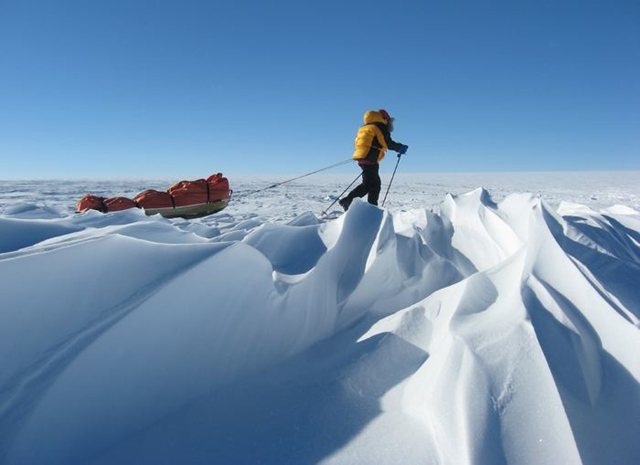In 365 Days Eric Larson plans to summit Everest and reach the North and South Poles to study the effects of Global Warming.
It seems like a daunting task, but Eric Larson is determined to reach the ends of the earth to reach what he calls the front lines of global warming. At each location, Larson will take measurements and use the expedtion as a platform to advocate new strategies for reducing carbon emissions.
“This expedition will tell the story of these remote places so we can better understand how our actions affect the poles and ultimately the planet,” Larsen says. “We all need to be reminded that we must act now to stop global warming.”

Assisting Larson is the Wolf Ridge Environmental Learning Center and the Protect Our Winters Foundation, who will help to produce 12 hours of climate change curriculum. This will provide teachers with the tools and information needed to prepare and educate students on global warming and how it may affect their future. Larsen will also team up with the Center for Biological Diversity to petition the Senate and President on the need for stronger climate legislation.
A member of The Explorer’s Club, Larsen isn’t new to the world of polar exploration. Larsen completed the first-ever summer expedition to the North Pole in 2006 where he pulled and paddled modified canoes over 600 miles of shifting sea ice and open ocean. In January 2009, Larsen successfully led an international team to the geographic South Pole becoming one of only a few Americans to ski to both poles.
Larson’s trip couldn’t come at a much more appropriate time. Scientists estimate that by summer 2030, the Arctic Ocean will be ice-free. Recently, the 1,250 square mile Larsen B Ice Shelf collapsed off of Antarctica and disintegrated into the Southern Ocean. A report by the UN’s Intergovernmental Panel on Climate Change forecasts that if current trends continue, 80 percent of Himalayan glaciers will be gone in 30 years. While we are seeing the most dramatic changes in the polar and higher altitude regions, global warming is an issue that affects us all. For more information, visit www.savethepoles.com
